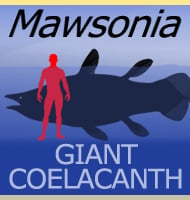In Depth
Teratosaurus was among the first rauisuchians to ever be named, though in the early days of the genus classification, it was actually thought to be a dinosaur. The holotype specimen of Teratosaurus, a partial right maxilla with teeth, was first found near Stuttgart, Germany in the year 1860. The holotype found its way to the famous Christian von Meyer who initially considered a kind of phytosaur called Belodon, but soon found the new maxilla to be quite different. Von Meyer created a new genus called Teratosaurus for the specimen, though oddly described the maxilla as the left and not the right. Post cranial skeletal remains were soon added to the maxilla holotype, but this was when things got really messed up. The post cranial remains were of sauropodomorph dinosaurs, the early precursors to the later sauropod dinosaurs. For over a century Teratosaurus was identified as either a carnivorous sauropodomorph dinosaur or an early theropod since the teeth of the original maxilla were clearly those of a meat eater, not a plant eater. The truth of the matter was not discovered until 1985 when Peter Galton wrote the first paper re-describing the holotype maxilla. The result of this is that the sauropodomorph remains once attributed to the Teratosaurus genus as additional species have now been moved to new genera including Efraasia. On an unrelated note after this a new species named T. silesiacus was created on the description of a new maxilla in 2005, though this was subsequently moved to its own new genus, Polonosuchus in 2009.
The true size of Teratosaurus is currently unknown. Previous estimates have suggested a total length of anywhere between three and six meters long, and while these length are within the known scope of rauisuchian sizes, many of these estimates date from times when sauropodomorph remains were attributed to the genus. Since these sauropodomorph remains are no longer included with the Teratosaurus genus, older size estimates can no longer be valid. As such with only a right maxilla attributed to the genus, only a best guess can be offered in determining the size of Teratosaurus.
Although the size is not known for certain, the maxilla of Teratosaurus does indicate that the genus was not small, and rauisuchians were amongst the top predators of the late Triassic. Teratosaurus would be expected to have been quadrupedal with a similar body form to other rauisuchians, with a tough armoured back. Though mostly quadrupedal, it may have been capable of rearing up on its hind legs, perhaps to get a better vantage when attacking. This is of course all speculation based upon a supposed similarity with relative genera.
Teratosaurus also should not be confused with the similarly named Teratophoneus, a type of tyrannosaur that lived in North America during the late Cretaceous.
Further Reading
- Reptilien aus dem Stubensandstein des oberen Keupers - Palaeontographica 7: 253-346 - H. von Meyer - 1861. - The poposaurid thecodontian Teratosaurus suevicus von Meyer, plus referred specimens mostly based on prosauropod dinosaurs - Stuttgarter Beitr�ge zur Naturkunde, B, 116: 1-29. - Peter M. Galton - 1985. - The Late Triassic Reptile Teratosaurus, A Rauisuchian not a Dinosaur - Palaeontology 29: 293-301. - Michael J. Benton - 1986. - A new rauisuchian reptile (Diapsida: Archosauria) from the Late Triassic of Poland - Journal of Vertebrate Paleontology, 25(1):78-86. - T. Sulej - 2005. - The taxonomy and anatomy of rauisuchian archosaurs from the Late Triassic of Germany and Poland - Acta Palaeontologica Polonica 54 (2): 221–230 - Stephen L. Brusatte, Richard J. Butler, Tomasz Sulej & Grzegorz Niedźwiedzki - 2009.









